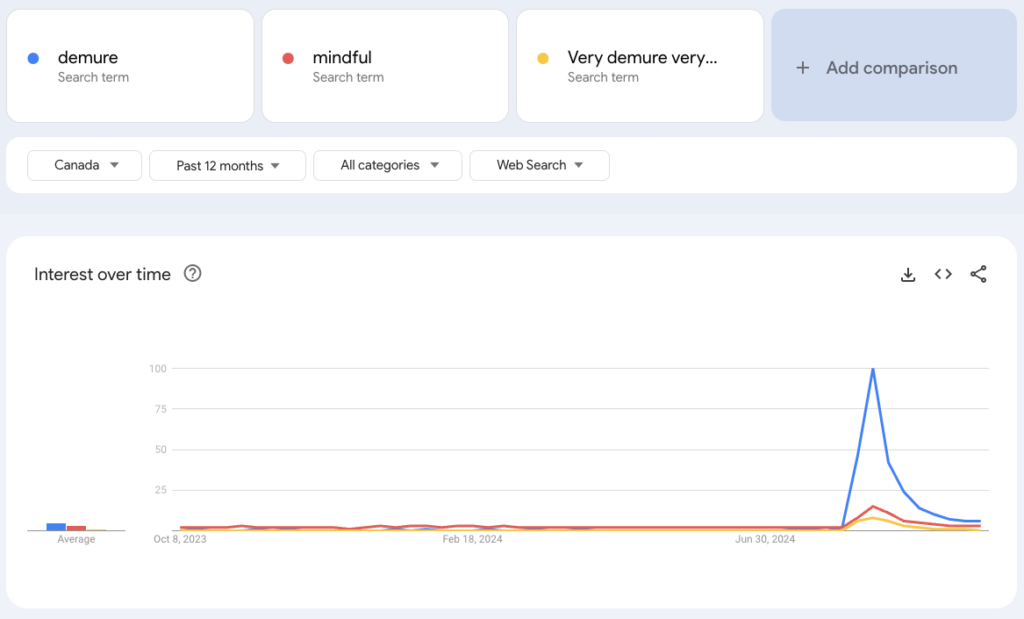KEENers Marketing Insights: Q3 2024
Q3 2024 has been an eventful quarter for digital marketers, with notable developments like the new Canadian Digital Service Tax (DST) and the rise of social media trends such as “very mindful, very demure.” Marketers have been busy adapting to these changes. In this edition of KEENers Marketing Insights, we’ll explore these key events and offer our advice on how to stay ahead as we move into the bustling Q4 season.
Canada Digital Service Tax (DST) Takes Effect
On June 20, 2024, the Canada DST officially became law and began enforcement on June 28, 2024. This development impacts all Canadian digital advertisers, creators, and platforms.
What Is the Canada DST, and How Does It Affect Us?
The DST is a 3% tax designed to target large corporations generating revenue from customers in Canada. It’s part of a global effort to tax multinational corporations that earn significant revenue across borders through digital means. The tax applies to corporations with annual revenues from digital sources exceeding $20,000,000 CAD. Notable companies in this bracket include Google, Meta, and Amazon.
You might be thinking, “I don’t run a large corporation, so why should I care?” Unfortunately, the additional tax costs are trickling down to businesses and advertisers that use these platforms.
Here are the four primary revenue sources affected by the DST:
- Online marketplace services
- Online advertising services
- Social media services
- The sale or licensing of user data obtained from an online marketplace, social media platform, or search engine
Google Passes DST Costs to Advertisers
At the beginning of Q3, Google announced a new “Canada DST Fee,” which will take effect on October 1, 2024. This fee will add a 2.5% surcharge to ads served in Canada.
Google explained that the fee helps cover part of the costs associated with complying with Canada’s digital services tax. Unfortunately, this means the tax isn’t just impacting international corporations; it’s also affecting Canadian businesses of all sizes that use Google for advertising.
What This Means for Your Business and Marketing
Google remains one of the most powerful platforms for search engine marketing and online demand generation. However, the new Canada DST will reduce advertising margins and affect return on investment (ROI). We recommend that businesses carefully review their advertising spend and revenue to assess whether the 2.5% surcharge will impact their performance. If so, consider making optimization changes within the platform or reevaluating your overall digital marketing efforts to counterbalance the cost increase.
As the digital marketing industry continues to evolve with more regulations, businesses must stay agile. We advise staying informed and adapting to these shifts to avoid being left behind.
Let’s Be Mindful and Demure!
We keep a close eye on trends to help you succeed by staying very mindful, very demure, and very thoughtful.
One of the most popular social media trends in Q3 was the “very demure, very mindful” movement, sparked by makeup influencer Jools Lebron on TikTok. This trend spread beyond TikTok, gaining traction across the internet. Just take a look at the surge in search terms for “demure” and “mindful” in August!

Lebron redefined “demure” and “mindful,” promoting understated elegance in everyday life—from work to travel. In her viral video, she emphasizes minimalistic makeup and hairstyles for the workplace, opting for a refined look that avoids drawing too much attention. You can check out her viral video here.
This trend quickly gained momentum, inspiring individuals and companies to create their own interpretations, from mindful eating to featuring pets in minimalist ways. Here’s an example from fashion publication Sheerluxe here.
Micro-trends like this provide great opportunities for brands to experiment with content and engage their audience creatively. They allow companies to add their unique touch to what’s trending while keeping aligned with community interests. Staying on top of trends can foster stronger connections and maintain brand relevance.
Today’s Micro Trend – Moo Deng!
Don’t worry, you’re not too late to hop on the latest viral trend—Moo Deng, the baby hippo!
Check out this fan page for Moo Deng clips:
https://www.tiktok.com/@bestofmoodeng
Moo Deng became an internet sensation in September when the Khao Kheow Open Zoo began posting regular content about her daily antics. Her name, which translates to “bouncy pork,” perfectly captures her playful personality. She’s known for running around her enclosure and playfully nipping at her keepers’ legs. Thousands of visitors come daily to see her in person.

Fun Social Trends for Your Channels
Businesses can tap into social trends like Moo Deng to enhance their content strategies. For example, Moo Deng’s playful actions were often tied to human expressions, which resonated with audiences.
Here’s an example of how this was done:
Moo Deng expression
Or take a look at how a brand attributed the cuteness to office vibes:
Moo Deng office mood
The key is to create content that aligns with your brand’s story while capitalizing on viral trends to gain algorithmic advantage.
Looking Ahead to Q4 2024
We’re excited to see what the Q4 marketing landscape will bring! Stay tuned to our socials (@keencreative) and bookmark our website for the next round of marketing insights, including our 2025 trend predictions.




